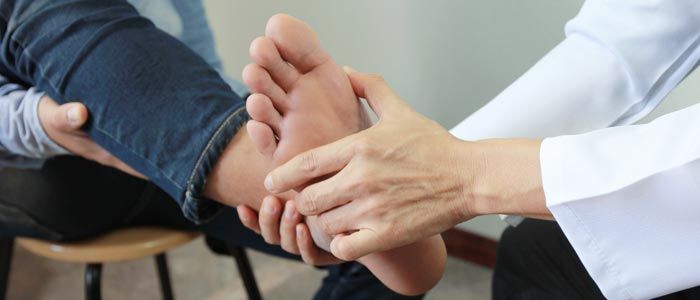Diabetic Feet
Diabetes is a multi-systemic disease that causes damage to blood vessels and nerves, and impairs the body’s ability to fight infection. In the feet, the disease can result in pain, tingling sensations and numbness called neuropathy, that can increase the risk of falls and instability, and the loss of protective pain sensation can make it difficult to identify areas of skin irritation or breakdown. When painful symptoms go unnoticed, care can be delayed, resulting in serious infections and preventable complications.
Blood vessel damage in the feet causes diminished circulation which can also make healing more difficult. Taken together, complications associated with diabetes significantly increase the risk of toe, foot, and lower leg amputations. For people with long-term diabetes and those in whom the disease is not well controlled, even a minor issue like a blister or ingrown toenail can result in a very serious infection. A diabetic should never treat their feet themselves, and prevention is the key to long term foot health.
Signs and Symptoms of Diabetic Foot Pathology:
- Burning, tingling, numbness, pins and needles sensation
- Changes in the skin, including cracks, dryness, and thin skin
- Nail thickening and redness
- Poor healing of wounds
- Swelling in the feet and ankles due to poor circulation
- Balance and mobility issues
- Cramping in the feet
- Bone and joint pain
Diabetic Foot Recommendations:
Diabetic foot pain (also called diabetic neuropathy) requires continuous management and observation to help minimize symptoms and prevent infections. Dr. Moss feels that education in the early warning signs of diabetic complications, nutrition counseling, daily blood sugar monitoring, and self-examination of the feet daily is essential to prevent most of the serious complications seen in diabetics. We strongly recommend a regimen of professional Podiatric care every 2-3 months, and a diabetic patient should never treat themselves, including the cutting of nails and corns and callouses.


